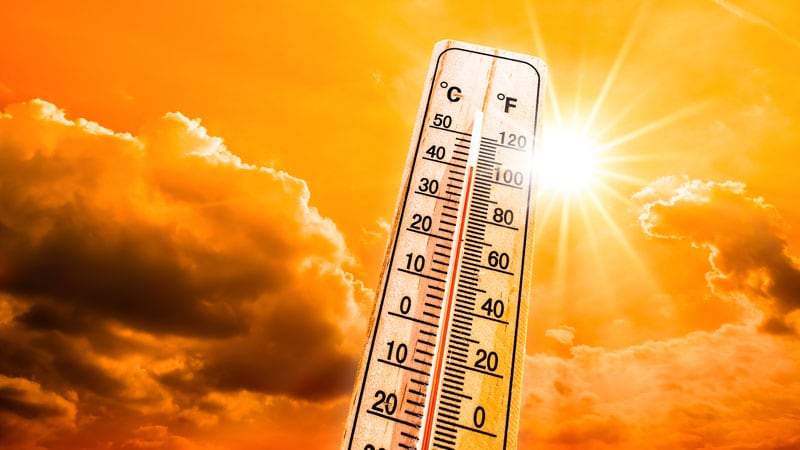Core Concepts
Exposure to heat waves and poor air quality doubles the risk of fatal myocardial infarction, with women and older adults being most vulnerable.
Abstract
The study from China suggests that the combination of heat waves and poor air quality significantly increases the risk of fatal myocardial infarction (MI), with women and older adults facing the highest risk. The research emphasizes the importance of reducing exposure to extreme temperatures and fine particulate pollution to prevent premature deaths from heart attacks. Key findings include:
- The harmful cardiovascular effects of air pollution are well-documented.
- Interaction between extreme hot temperatures and air pollution poses increased risks, especially concerning global warming.
- The study analyzed data on over 200,000 adults who suffered fatal MI between 2015 and 2020.
- Risk of fatal MI significantly increased during heat waves and cold snaps, particularly with high levels of PM 2.5.
- Women and adults over 80 years old were more susceptible to fatal MI during extreme temperature events.
- Mitigating extreme temperature events and PM 2.5 exposures could prevent premature deaths from MI.
Customize Summary
Rewrite with AI
Generate Citations
Translate Source
To Another Language
Generate MindMap
from source content
Visit Source
www.medscape.com
Heat Waves Plus Air Pollution Tied to Doubling of Fatal MI
Stats
"Up to 3% of all deaths due to MI could be attributed to the combination of extreme temperatures and high levels of ambient fine particulate matter (PM 2.5)."
"The risk of fatal MI was twice as high during 4-day heat waves that had PM 2.5 above 37.5 µg/m 3."
"Days with high levels of PM 2.5 during cold snaps did not have an equivalent increase in the risk of fatal MI."
"Up to 2.8% of MI deaths during the 5-year study period may be attributable to the combination of extreme temperature exposure and PM 2.5 at levels exceeding World Health Organization air quality guidelines (37.5 g/m 3)."
Quotes
"Our findings provide evidence that reducing exposure to both extreme temperatures and fine particulate pollution may be useful to prevent premature deaths from heart attack." - Yuewei Liu, MD, PhD
"Mitigating both extreme temperature events and PM 2.5 exposures 'may bring health cobenefits in preventing premature deaths from MI.'" - Researchers
Key Insights Distilled From
by Megan Brooks at www.medscape.com 07-31-2023
https://www.medscape.com/viewarticle/995009
Deeper Inquiries
How can public health policies effectively address the risks posed by the combination of heat waves and air pollution
Public health policies can effectively address the risks posed by the combination of heat waves and air pollution through a multi-faceted approach. Firstly, implementing stricter regulations on industrial emissions and vehicle exhaust can help reduce the levels of ambient fine particulate matter (PM 2.5) in the air, thus lowering the overall risk of fatal myocardial infarction (MI). Additionally, promoting the use of clean energy sources and encouraging sustainable transportation methods can further decrease air pollution levels.
Furthermore, public health campaigns can educate the population on the dangers of extreme temperatures and poor air quality, providing guidelines on how to protect themselves during heat waves and high PM 2.5 days. Early warning systems can be established to alert vulnerable populations, such as older adults and women, about upcoming heat waves and air pollution spikes, allowing them to take necessary precautions. By integrating these strategies, public health policies can effectively mitigate the risks associated with the combination of heat waves and air pollution.
What are the potential implications of these findings on urban planning and environmental regulations
The findings of the study have significant implications for urban planning and environmental regulations. Urban planners may need to reconsider the design of cities to incorporate more green spaces and increase tree coverage, as vegetation can help mitigate the urban heat island effect and improve air quality. Zoning regulations can be updated to limit industrial activities in residential areas, reducing exposure to harmful pollutants.
Moreover, building codes can be revised to include measures that enhance heat resilience, such as cool roofs and green infrastructure. Environmental regulations should be strengthened to enforce stricter limits on emissions from factories and vehicles, ensuring that air quality standards are met. By integrating these considerations into urban planning and environmental regulations, cities can become more resilient to the health risks posed by heat waves and air pollution.
How can individuals protect themselves from the increased risk of fatal MI during extreme temperature events and high levels of PM 2.5
Individuals can protect themselves from the increased risk of fatal myocardial infarction (MI) during extreme temperature events and high levels of PM 2.5 by taking several proactive measures. During heat waves, it is essential to stay hydrated, avoid prolonged exposure to the sun, and seek out air-conditioned spaces to cool down. Wearing light-colored, loose-fitting clothing can also help regulate body temperature.
When air pollution levels are high, individuals should limit outdoor activities, especially during peak traffic hours when emissions are highest. Using air purifiers indoors can help reduce exposure to fine particulate matter. Additionally, keeping windows closed and using air conditioning with a clean filter can prevent pollutants from entering the home. By staying informed about air quality levels and taking these precautions, individuals can reduce their risk of MI during extreme temperature events and high PM 2.5 days.
0
